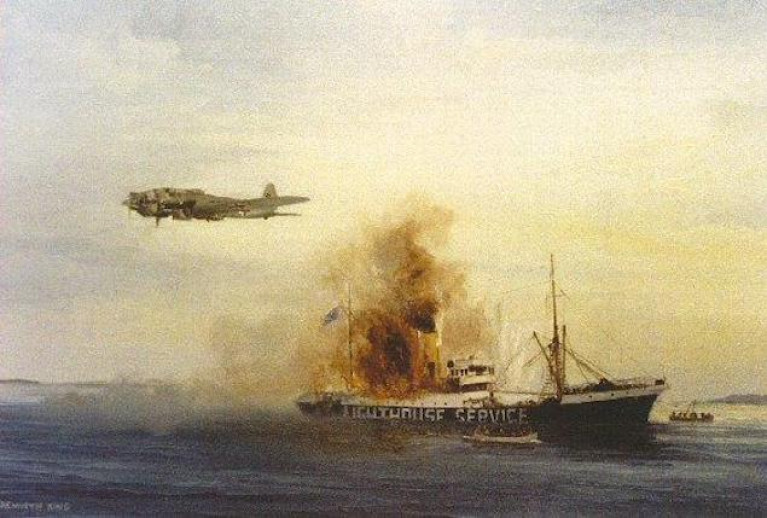Six Dun Laoghaire mariners never came home for Christmas 80 years ago, when their lightship was attacked and sunk by a German bomber aircraft off the Wexford coast.
Now, the grand-daughter of one of those lost has appealed to other relatives of the Isolda fatalities to make contact for research she is undertaking into their lives.
“They may not have been famous, but I’m sure that each of them was remarkable and their loss left a deep grief in their families,” says Elleesa Rushby, whose grandfather William Rushby died in the bombing at the age of 43.
Coxswain Patrick Dunne (47), James Hayden (38), Patrick Shortt (44), William Holland (58) and Patrick Farrell (24) also died with her grandfather after a German aircraft released its bombs on the ship, having circled the Isolda three times.
 The lightship Isolda which was sunk by a German bomber on December 19th, 1940 with the loss of six lives
The lightship Isolda which was sunk by a German bomber on December 19th, 1940 with the loss of six lives
The six Dun Laoghaire men were among 28 crew on board when the ship sailed from Rosslare, Co Wexford, with a relief crew for the Barrels and Coningbeg lightships stationed off the Saltee islands.
The 22 survivors, including the ship’s master, Capt Albert Bestic, took to lifeboats and landed into Kilmore Quay.
 Captain of the Isolda, Capt Albert Bestic
Captain of the Isolda, Capt Albert Bestic
Seven of the survivors had been wounded, and all were in shock.
Ms Rushby says her father was 12 years old and out buying new shoes with his mother, Elizabeth Rushby, in Dun Laoghaire when a woman came into the shop and told her the ship had sunk.
 Isolda crewmember William Rushby with his wife Elizabeth. He was one of six Dun Laoghaire men who died when the lightship was bombed in December 1940
Isolda crewmember William Rushby with his wife Elizabeth. He was one of six Dun Laoghaire men who died when the lightship was bombed in December 1940
“My grandmother and the wives of all the crew were told that if their husbands were not on the evening train from Wexford to Dun Laoghaire, they had not survived,” she says.
“Imagine how heartbreaking it must have been for six women standing on the station platform that night, a week before Christmas...” she says.
During both world wars, lightship crews were very vulnerable to attack as their vessels were a form of floating lighthouse, anchored with no propulsion.
The last manned lightship in the Irish lighthouse fleet was converted to an automatic light float in the mid-1980s.
Royal Irish Academy historian Dr Michael Kennedy says buoys on the deck of the Isolda may have been mistaken for mines.
However, the ship was clearly marked “Lighthouse Service” in large white lettering on its hull, he says.
Ireland had a three-mile nautical limit, but essentially it “meant little to British and German military forces who were well aware the island was undefended”, he says.
The Commissioners of Irish Lights ship Granuaile remembered the six men with a wreath-laying ceremony at sea, and a video has also been released to honour the Isolda crew for their “loyal and dedicated service”.
Irish Lights chief executive Yvonne Shields O’Connor said that “in normal times we would have come together” for the commemoration.
“This was a deeply sad day in the history of Irish Lights,” she said.
“The incident highlights the dangers encountered by Irish Lights, and its personnel in the course of its long history. Our thoughts are with our former colleagues who lost their lives and with their families.”
Ms Shields O’Connor said that any relatives who may wish to contact Ms Rushby can do so by contacting the Commissioner of Irish Lights at Harbour Road, Dun Laoghaire, Co Dublin on 01 2715400 or by email at [email protected]
































































